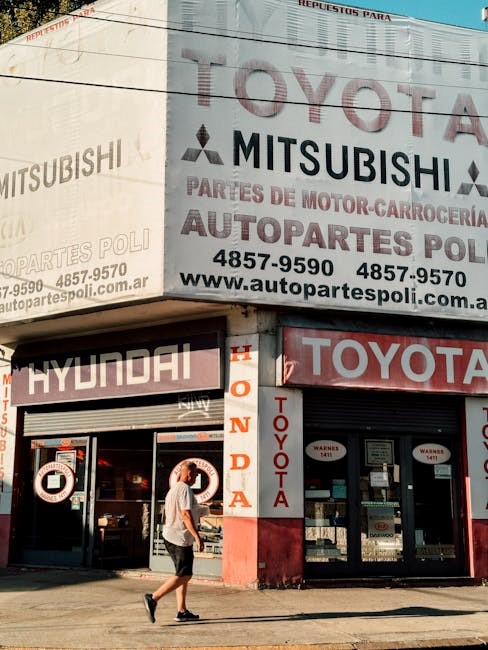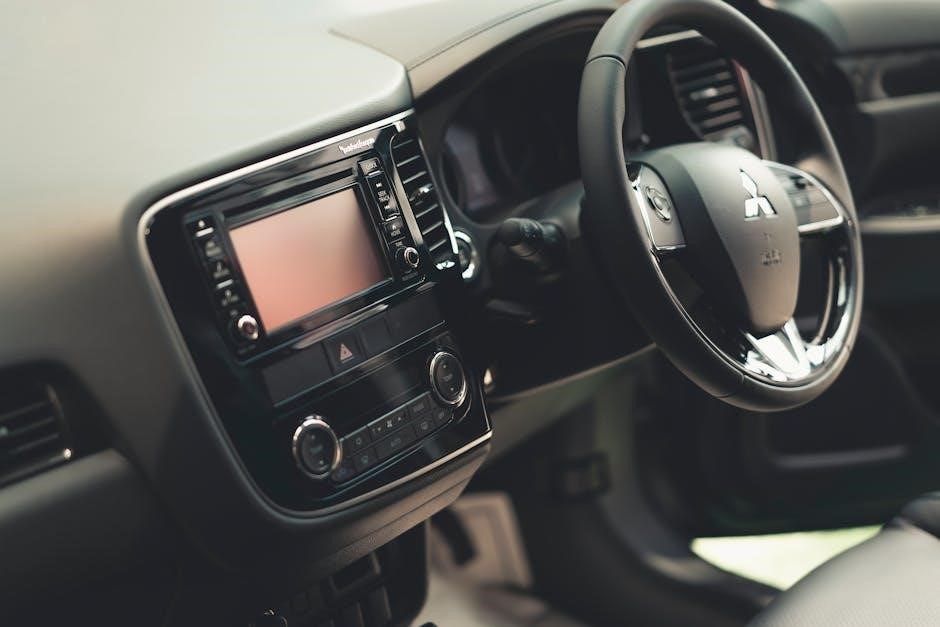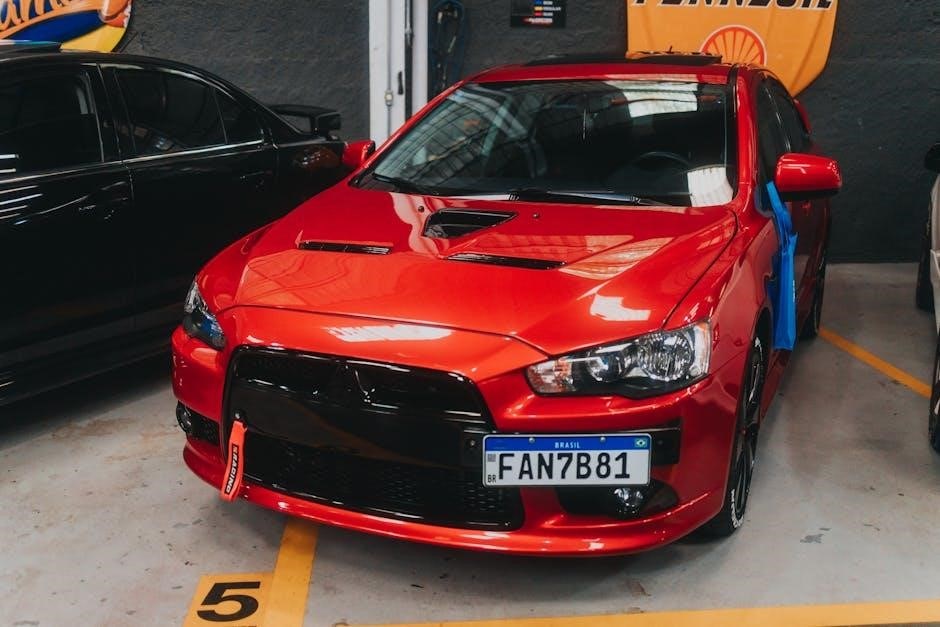mitsubishi air conditioner troubleshooting guide pdf
Category : Australia
Mitsubishi Air Conditioner Troubleshooting Guide
This guide offers comprehensive steps for resolving common Mitsubishi air conditioner issues. It assists in diagnosing problems, from cooling failures to error codes, to ensure your system operates efficiently. This guide includes maintenance and safety tips.
Mitsubishi Electric stands as a leading manufacturer renowned for its advanced technology and reliability in air conditioning systems. Particularly noted is their innovative Mitsubishi Inverter Air Conditioners, which deliver energy-efficient cooling and heating solutions suitable for both residential and commercial environments. These systems are designed for optimal performance, ensuring user comfort and reducing energy consumption. Mitsubishi air conditioners often integrate features like precise temperature control, quiet operation, and air-purifying filters. These features enhance the overall air quality and user experience. Selecting a Mitsubishi air conditioner means investing in a product that combines technological innovation with lasting durability. Regular maintenance, as outlined in user manuals, is vital. Proper care ensures that these sophisticated systems maintain their efficiency and continue providing dependable climate control for years. Understanding the basic components and operational features of your Mitsubishi unit is essential for effective troubleshooting and upkeep.
Importance of a Troubleshooting Guide
A troubleshooting guide is crucial for maintaining the efficiency and longevity of your Mitsubishi air conditioner. This guide offers step-by-step instructions to diagnose and resolve common issues, reducing the need for professional repairs. By identifying problems early, such as a clogged air filter or low refrigerant levels, you can prevent more significant damage and costly repairs. Regularly consulting the guide allows homeowners and technicians to perform routine maintenance tasks effectively. These tasks include cleaning, filter replacements, and basic system checks, ensuring the air conditioner operates at peak performance. Using a troubleshooting guide promotes a deeper understanding of your unit’s operation, empowering users to take proactive measures. This proactive approach extends the lifespan of the air conditioner and ensures consistent, reliable cooling. Additionally, a well-structured guide provides essential safety precautions. These precautions minimize risks during maintenance and repairs, protecting users from electrical hazards and other potential dangers associated with air conditioner servicing. It is an invaluable resource.

Common Problems and Solutions
This section addresses frequent Mitsubishi AC problems. These issues include inadequate cooling, unusual noises, and starting failures. We provide practical solutions, from cleaning filters to identifying potential electrical faults. These troubleshooting steps ensure efficient AC operation.
Air Conditioner Not Cooling
If your Mitsubishi air conditioner isn’t cooling effectively, several factors could be responsible. A common cause is a dirty air filter, restricting airflow and reducing cooling capacity. Check and clean the air filter regularly to maintain optimal performance; An obstructed outdoor unit can also hinder heat dissipation, leading to poor cooling. Ensure the outdoor unit is free from debris, leaves, and other obstructions that impede airflow.
Low refrigerant levels can significantly impact cooling efficiency. Refrigerant leaks can occur over time, reducing the system’s ability to cool the air. If you suspect a refrigerant leak, consult a qualified technician to diagnose and repair the leak and recharge the system.
A faulty thermistor, which regulates temperature, can also cause cooling problems. If the thermistor is not functioning correctly, it may provide inaccurate temperature readings, leading to improper cooling cycles. A malfunctioning compressor, the heart of the cooling system, can also result in inadequate cooling. If the compressor is not running efficiently, it may not be able to circulate refrigerant effectively.
Additionally, ensure that the air conditioner is appropriately sized for the room it is cooling. An undersized unit may struggle to cool the space adequately, especially during peak heat. Consider these factors and take appropriate action to restore your air conditioner’s cooling performance.
Dirty Outdoor Unit
A dirty outdoor unit significantly impairs your Mitsubishi air conditioner’s cooling efficiency. The outdoor unit’s primary function is to dissipate heat extracted from your indoor environment. When the unit is covered in dirt, leaves, or debris, this heat dissipation process becomes severely restricted. This restriction forces the air conditioner to work harder, consuming more energy and reducing its overall cooling capacity.
Regularly inspecting and cleaning the outdoor unit is essential for maintaining optimal performance. Begin by visually examining the unit for any visible obstructions. Remove any leaves, twigs, grass clippings, or other debris that may be blocking the airflow. Use a soft brush or vacuum cleaner with a brush attachment to gently remove loose dirt and dust from the fins.
For more stubborn dirt or grime, you can use a garden hose with a gentle spray nozzle. Be careful not to use high pressure, as this can damage the delicate fins. Spray the fins from the inside out to push the dirt away from the unit. Allow the unit to dry completely before turning the air conditioner back on.
By keeping the outdoor unit clean and free from obstructions, you can ensure efficient heat dissipation, improve cooling performance, and reduce energy consumption. This simple maintenance task can significantly extend the lifespan of your Mitsubishi air conditioning system.
Incorrectly Sized AC Unit
An incorrectly sized air conditioning unit, whether too large or too small, can lead to significant performance issues and energy waste. If your Mitsubishi AC is too small for the space it’s meant to cool, it will struggle to reach the desired temperature, running constantly without ever effectively cooling the room. This continuous operation consumes excessive energy and puts undue strain on the unit, potentially shortening its lifespan.
Conversely, an oversized AC unit cools the room too quickly, resulting in short cycling. Short cycling occurs when the unit turns on and off frequently, preventing it from dehumidifying the air properly. This can lead to a damp, uncomfortable indoor environment, even when the temperature is seemingly cool. Furthermore, short cycling is inefficient, as the unit consumes more energy during startup than during continuous operation.
Determining the correct AC size for your space involves considering factors such as room size, insulation, window area, and climate. Consulting with a qualified HVAC professional is crucial for accurate sizing calculations. They can assess your specific needs and recommend the appropriate BTU (British Thermal Unit) rating for your Mitsubishi air conditioner. Investing in a properly sized unit ensures optimal cooling performance, energy efficiency, and long-term reliability.
Clogged Air Filter
A clogged air filter is one of the most common culprits behind reduced cooling efficiency in Mitsubishi air conditioners. The air filter’s primary function is to trap dust, pollen, and other airborne particles, preventing them from circulating throughout your home and damaging the AC unit’s internal components. However, when the filter becomes excessively clogged with debris, it restricts airflow, forcing the system to work harder to maintain the desired temperature.
This restricted airflow can lead to several problems. Firstly, it reduces the cooling capacity of the AC, making it less effective at cooling the room. Secondly, it can cause the evaporator coil to freeze up due to insufficient airflow, further hindering cooling performance. Thirdly, a stressed system consumes more energy, resulting in higher electricity bills.
Regularly checking and cleaning or replacing your air filter is essential for maintaining optimal AC performance. The frequency of filter changes depends on factors such as air quality and AC usage, but generally, it’s recommended to inspect the filter monthly and replace it every one to three months. A clean air filter ensures proper airflow, efficient cooling, and a healthier indoor environment. For cleaning, you can use vacuum or water.
Low Refrigerant Levels

Low refrigerant levels can significantly impact the cooling performance of your Mitsubishi air conditioner. Refrigerant is the lifeblood of your AC system, responsible for absorbing heat from the indoor air and releasing it outside. When the refrigerant level is low, the AC unit struggles to cool effectively, leading to warm air blowing from the vents and increased energy consumption.
Refrigerant leaks are the primary cause of low refrigerant levels. These leaks can occur at various points in the system, such as the refrigerant lines, coils, or connections. Identifying and repairing these leaks requires specialized tools and expertise, making it a job best left to qualified HVAC technicians.
Attempting to recharge the refrigerant yourself without addressing the underlying leak is only a temporary fix and can potentially cause further damage to the system. It is crucial to have a professional locate and repair the leak before adding more refrigerant.
Signs of low refrigerant levels include weak airflow, inconsistent cooling, ice buildup on the refrigerant lines, and a hissing or bubbling noise coming from the AC unit. If you suspect low refrigerant levels, contact a certified HVAC technician for a thorough inspection and repair. Addressing refrigerant leaks promptly not only restores cooling efficiency but also prevents environmental damage.
Faulty Thermistor
A faulty thermistor can disrupt the accurate temperature regulation of your Mitsubishi air conditioner. The thermistor acts as a temperature sensor, relaying information to the AC unit’s control board to maintain consistent cooling or heating. When the thermistor malfunctions, it sends incorrect temperature readings, leading to erratic operation, such as the AC running constantly or shutting off prematurely.
Several factors can contribute to thermistor failure, including electrical surges, physical damage, or general wear and tear. Diagnosing a faulty thermistor requires specialized testing equipment and a thorough understanding of the AC system’s electrical components. It’s a task best left to a qualified HVAC technician.
Symptoms of a faulty thermistor include inconsistent cooling or heating, inaccurate temperature readings on the thermostat, and the AC unit cycling on and off frequently. In some cases, the AC may display an error code indicating a thermistor problem.
Replacing a faulty thermistor involves locating the sensor, disconnecting it from the control board, and installing a new, compatible thermistor. It’s essential to ensure the replacement thermistor is the correct type and specification for your Mitsubishi AC model. Proper installation is crucial to ensure accurate temperature sensing and optimal AC performance. If you suspect a faulty thermistor, consult a certified HVAC technician for diagnosis and repair.
Air Conditioner Not Turning On
If your Mitsubishi air conditioner fails to power on, several potential issues could be responsible. Begin by verifying that the unit is receiving power. Check the circuit breaker to ensure it hasn’t tripped. Reset it if necessary. Next, confirm that the AC unit is properly plugged into a functioning electrical outlet. Test the outlet with another device to rule out electrical issues.
Examine the remote control batteries. Replace them if they’re weak or depleted. Make sure the remote is properly programmed to communicate with the AC unit. If the remote is functional, inspect the AC unit’s power switch to ensure it’s in the “on” position.
A faulty capacitor can also prevent the AC from starting. Capacitors provide the initial jolt of electricity needed to start the motor. A failing capacitor may cause the AC to hum but not turn on.
The control board, which acts as the brain of the AC unit, could also be malfunctioning. A faulty control board can disrupt the power supply to the motor and other components.
Addressing these issues may require specialized knowledge and tools. If you’ve exhausted the basic troubleshooting steps and your AC still won’t turn on, consulting a certified HVAC technician is recommended.

Error Codes
Mitsubishi air conditioners use error codes to indicate specific malfunctions. These codes help diagnose problems quickly. Refer to your unit’s manual for a comprehensive list and their corresponding solutions. Contact a qualified technician for assistance.

Understanding Error Codes
Mitsubishi air conditioning systems, known for their efficiency, incorporate error codes for diagnostics. These codes appear on the unit’s display or remote, signaling specific issues that need addressing. Understanding these codes is crucial for quick troubleshooting.
Error codes can point to a range of problems, from minor issues like clogged filters to more severe malfunctions such as refrigerant leaks or electrical faults. Consulting the user manual is essential for accurate interpretation.
When an error code appears, note it down. Then, consult the manual to identify the problem. Some issues can be resolved with simple actions like cleaning filters or resetting the unit. However, complex problems often require professional assistance.
Ignoring error codes can lead to further damage and costly repairs. Therefore, prompt action is always recommended. If you’re unsure about the code or the troubleshooting steps, contact a qualified technician to avoid any potential risks or complications. Regular maintenance can also prevent many error codes from appearing.

Common Error Code Examples

Mitsubishi air conditioners display various error codes, each indicating a specific issue. Knowing these codes helps in diagnosing problems quickly. For instance, a common code like “EO” often points to communication errors between the indoor and outdoor units. This might require checking the wiring connections or resetting the system.
Another frequent code involves issues with the thermistor, the temperature sensor. If the thermistor malfunctions, the air conditioner may not regulate temperature correctly. Replacing the sensor is usually the solution.

Refrigerant-related errors are also common. Low refrigerant levels can trigger error codes, indicating a leak. A professional technician is needed to locate and repair the leak, then recharge the system.
Electrical faults can also cause error codes. These might stem from power surges, wiring problems, or faulty components. Addressing electrical issues requires caution and expertise.
It’s important to consult the specific Mitsubishi model’s manual for accurate error code interpretations, as codes can vary. Attempting repairs without proper knowledge could worsen the problem. Always prioritize safety and consider professional assistance.

Maintenance Tips
Regular maintenance ensures optimal performance and longevity of your Mitsubishi air conditioner. Simple steps, like cleaning filters and checking for obstructions, prevent common issues. Professional servicing is also recommended for comprehensive care.
Regular Cleaning
Regular cleaning is crucial for maintaining the efficiency and lifespan of your Mitsubishi air conditioner. Dust and debris accumulation can significantly impact performance, leading to reduced cooling capacity and increased energy consumption. Start by unplugging the unit for safety, then gently vacuum the exterior to remove surface dust.
The air filters, typically located behind the front panel, should be cleaned every two to four weeks, depending on usage and environmental conditions. Wash them with mild soap and water, ensuring they are completely dry before reinstallation. Dirty filters restrict airflow, forcing the unit to work harder and potentially causing it to overheat.
The outdoor unit also requires attention. Clear away any vegetation, leaves, or debris that may obstruct airflow around the unit. Use a soft brush or vacuum to remove dust from the fins, taking care not to damage them. Regular cleaning not only improves performance but also prevents costly repairs and extends the life of your air conditioner. Neglecting maintenance can lead to more significant problems down the line.
Air Filter Maintenance
Maintaining clean air filters is paramount for the optimal performance and longevity of your Mitsubishi air conditioning system. Air filters trap dust, pollen, and other airborne particles, preventing them from circulating throughout your home and affecting the air conditioner’s internal components. Regularly inspecting and cleaning these filters ensures efficient airflow and cooling capacity.
Typically, air filters should be checked every two weeks and cleaned or replaced at least every one to three months, depending on usage and environmental conditions. To clean a washable filter, gently remove it from the unit, vacuum away loose debris, and then wash it with mild soap and water. Ensure the filter is completely dry before reinstalling it to prevent mold growth.
If your air conditioner uses disposable filters, replace them with new ones of the correct size and type. Neglecting air filter maintenance can lead to reduced airflow, causing the system to work harder, consume more energy, and potentially overheat. Dirty filters can also contribute to poor indoor air quality, exacerbating allergies and respiratory issues. Regular maintenance prevents costly repairs.

Safety Precautions
Prioritize safety when troubleshooting your Mitsubishi air conditioner. Always disconnect power before maintenance. Ensure proper ventilation during operation. If unsure, consult a professional technician. These measures prevent electrical shock and ensure safe, efficient operation of the unit.
Electrical Safety
When working with any electrical appliance, particularly a Mitsubishi air conditioner, adhering to stringent safety precautions is paramount. Before initiating any troubleshooting or maintenance procedures, always disconnect the unit from its power source. This simple step significantly reduces the risk of electrical shock and potential injuries.
Ensure your hands are dry and that you are standing on a dry surface to minimize conductivity. Never attempt to repair or modify electrical components unless you possess the necessary expertise and qualifications. Incorrect handling of electrical wiring can lead to severe consequences, including fires or electrocution.
Regularly inspect the power cords and plugs for any signs of damage, such as fraying or exposed wires. Damaged cords should be replaced immediately by a qualified electrician. Avoid overloading electrical circuits, as this can cause overheating and increase the risk of electrical hazards.
If you encounter any unusual smells, sounds, or smoke emanating from the air conditioner, immediately disconnect the power and contact a certified technician for assistance. Do not attempt to diagnose or resolve complex electrical issues on your own. A professional assessment is crucial to ensure the safety and proper functioning of the unit. Remember, prioritizing electrical safety is essential for protecting yourself and your property.
Proper Ventilation
Ensuring proper ventilation around your Mitsubishi air conditioner is crucial for its efficient and safe operation. Adequate airflow prevents the unit from overheating, which can lead to reduced performance, increased energy consumption, and potential safety hazards. The outdoor unit, in particular, requires ample space for air intake and exhaust.
Avoid obstructing the outdoor unit with plants, debris, or other objects that could restrict airflow. Regularly clear any obstructions to maintain optimal ventilation. The indoor unit also benefits from proper ventilation. Ensure that air vents are not blocked by furniture or curtains, as this can hinder the circulation of cool air throughout the room.
When performing maintenance or repairs, work in a well-ventilated area to avoid inhaling refrigerant or other potentially harmful substances. Open windows and doors to allow for fresh air circulation. If you are using cleaning products, follow the manufacturer’s instructions and ensure adequate ventilation to prevent the buildup of fumes.
Proper ventilation also helps to prevent the accumulation of moisture, which can lead to mold growth and other indoor air quality issues. Regularly inspect the area around the air conditioner for signs of moisture and take steps to address any leaks or condensation problems. By prioritizing proper ventilation, you can enhance the performance, safety, and longevity of your Mitsubishi air conditioner while maintaining a healthy indoor environment.
